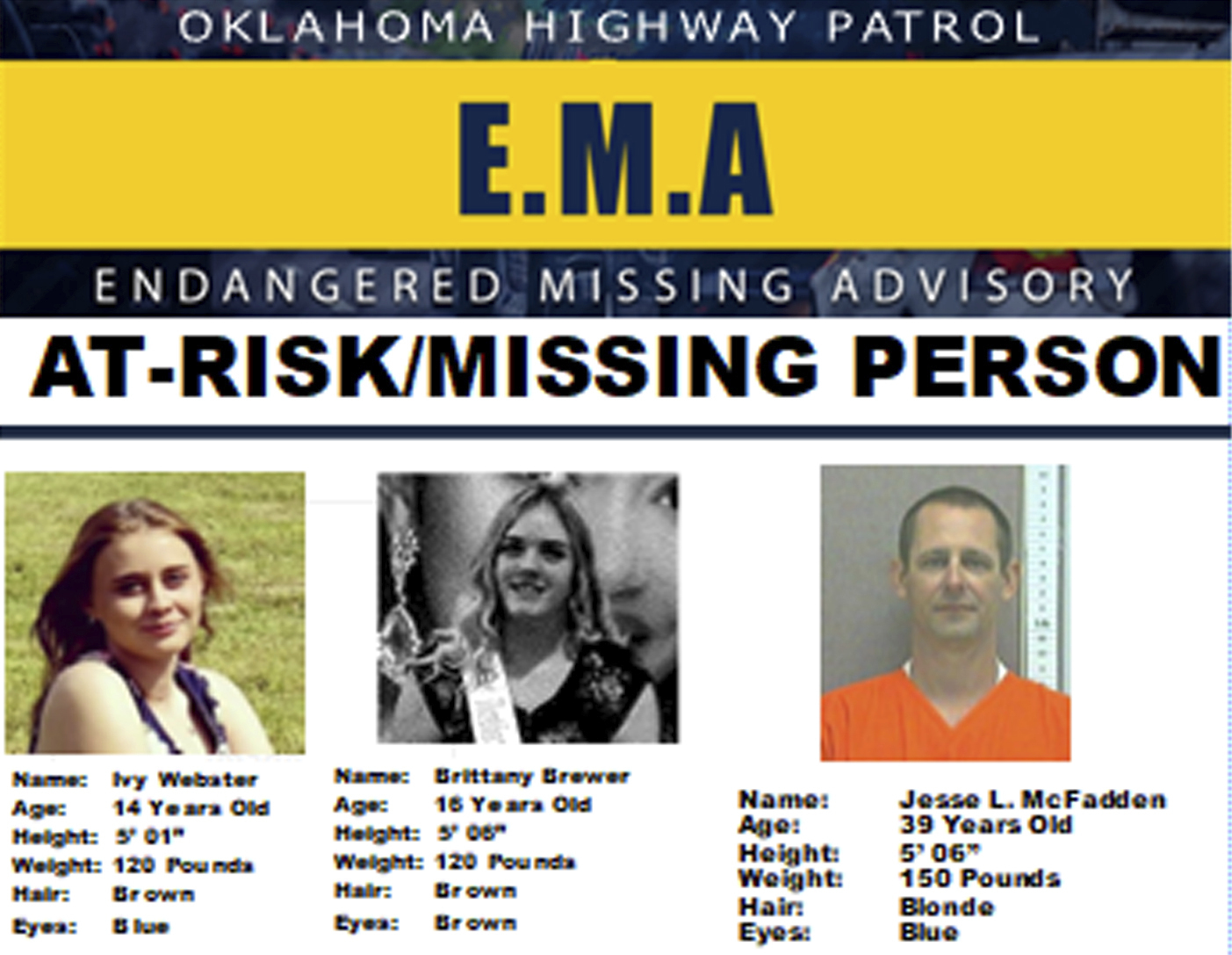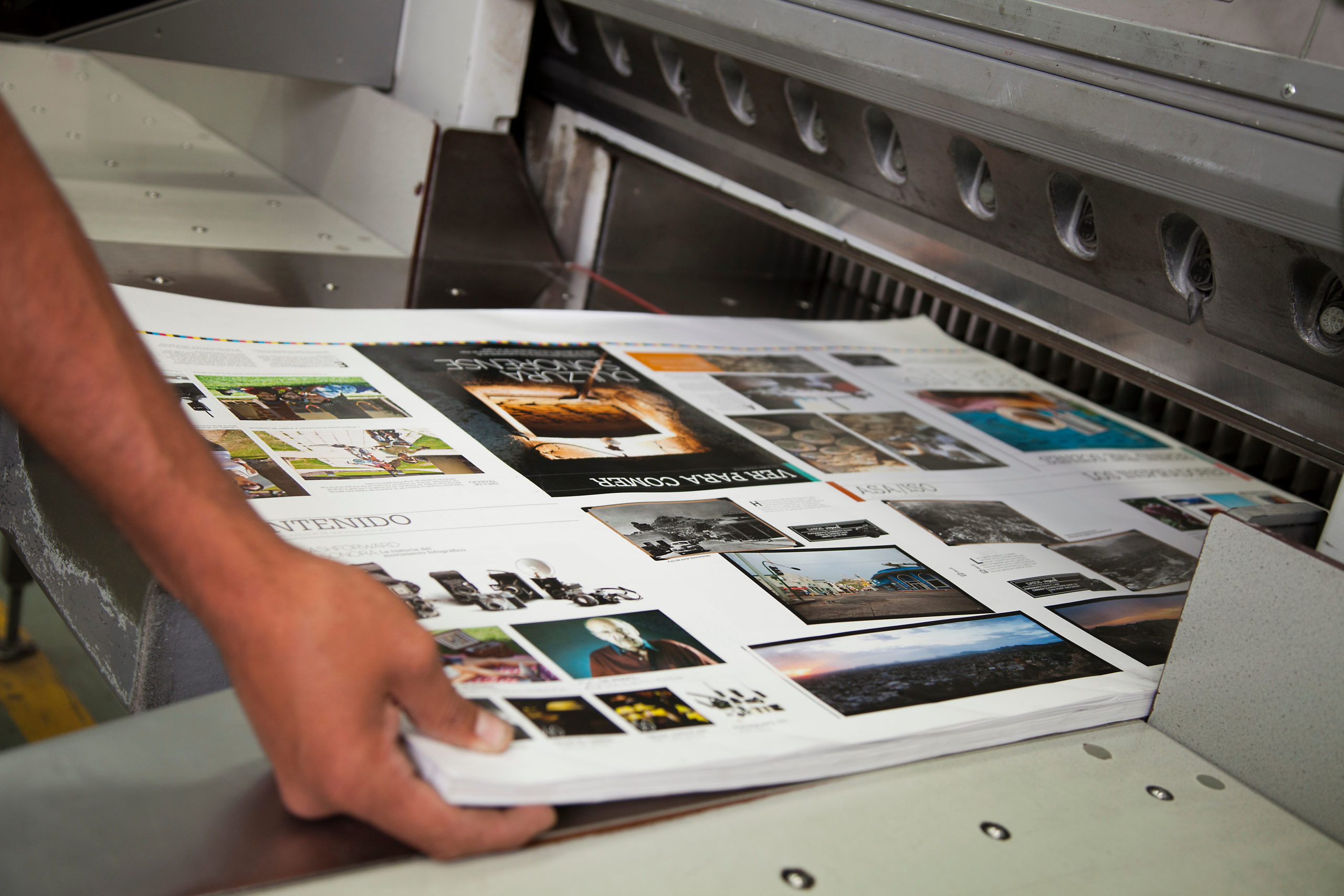UNCATEGORIZED
KSL+: What Will COVID Look Like Next Month, Next Year, Next Decade?
Jun 3, 2021, 3:57 PM
With more and more people getting vaccinated, including kids, we’re looking to the future of COVID. What will it look like next month, next year, next decade? We hear a lot about herd immunity. But what is it? Is it possible? Will it even work? Especially since we don’t have immunity to other coronaviruses? I spoke to an expert at the University of Utah. Here’s our conversation.
Editor’s note: Interviews are lightly edited for clarity and readability.
Lindsay Keegan: I’m Lindsay Keegan, and I’m a research assistant professor in the Division of Epidemiology up at the University of Utah.
Matt Rascon: This idea of herd immunity has kind of been echoed around from the beginning, especially when we started seeing the rollout of the vaccine. Can you talk about what we’re talking about when we say herd immunity?
Lindsay Keegan: Herd immunity refers to the specific threshold that you cross where when somebody is infected with a virus or something else that spreads person to person, there aren’t enough people that they come into contact with who are no longer immune to the disease, so that they can no longer replace themselves. So essentially, if I have COVID, everybody that I contact and could potentially spread COVID to, can’t get COVID. And so I can’t spread the disease anymore. So it’s a it’s a very simple concept to to understand, which is why I think people like to talk about it so much. But it is in, in practice, it’s a lot more complicated.
Matt Rascon: Okay, . And that’s kind of what we want to get into. Because I think there was this sort of narrative that that’s what we had to get to. That was the goal. Otherwise, we’re stuck in this pandemic…forever. Where did where does that go sideways? And can you maybe clarify some things for us?
Lindsay Keegan: So the first point is that either way, we probably won’t be stuck in a pandemic forever, but we probably will be stuck with COVID forever. So it probably will continue to spread in small numbers or in little outbreaks. But not in the same sort of global devastating outbreak that we’ve seen over the last, what, 15 months at this point.
The other side of it is that herd immunity is sort of a journey rather than destination, right? You have this threshold and for COVID, at somewhere between maybe 60% and 80% of the population needs to be immune, but the population isn’t fixed. People are being born everyday, people who have immunity are dying. And so you have the shifting demographics. You also have people losing immunity, either because the vaccine immunity wanes or because their natural immunity wanes. You have people getting COVID, and they are getting vaccinated, and then they become immune. We’ve sort of been talking about herd immunity as if it’s a static picture and once you hit this threshold, you’re done. But in reality human population dynamics are just much more complicated than that.
Matt Rascon: We’ve been talking a lot about this vaccine rollout slowing down recently. There’s a shift in the state, moving away from mass vaccine clinics to more physicians giving the vaccine like you would see with the flu and things like that. And so it doesn’t seem like it’s really attainable that herd immunity unless we see numbers like 70, 80, 90% that would need to get the vaccine. But you’re saying that that’s okay.
Lindsay Keegan: Like I said, herd immunity is not a destination, and I will sort of contradict what you just said, That’s okay. I mean, it’s not really okay. Ideally, we would get everybody in the world fully vaccinated, and then we would we could be done with COVID. Right? We’ve eliminated smallpox by doing that. We could eliminate other infectious diseases, but it’s just a lot more complicated. And so the part that makes it better, I won’t say okay, but the part that makes it better is that along this journey, it’s not a light switch, where before you hit herd immunity, COVID spreading and after you hit herd immunity, it’s off for good. Think of it more like a dimmer, where the more people in the population who are immune, the less well COVID can spread, right? If it requires that 90% of the people that I contact are immune to COVID in order for me to not spread it at all, but only 60% of the people I contact are immune, well then that’s still a reduction. It’s better compared to if 0% of those people were immune, right? So as we approach herd immunity COVID spreads, or any disease, spreads less and less well. And so early in the pandemic, when everybody in the world essentially was able to get COVID, it spread a lot faster. And now as we get to, I think I saw an article that 50% of American adults were vaccinated. So that’s a 50% reduction in the number of people who can get COVID just due the vaccine. And then there’s another group of people who are immune to COVID, because they’ve gotten COVID. And so those people count, right? We can’t we don’t just count the people who got vaccinated, we count both.
Matt Rascon: And I’m thinking of kind of the the tiered system that we did it in where those who are most vulnerable, those who are had greatest risk of exposure and greatest risk to their health, if they’re vaccinated, if they’re good then we kind of are able to continue on.
Lindsay Keegan: We see a large number of people dying on a day-to-day basis to maybe once we have all the vulnerable people vaccinated or immune, then, , our ICU is aren’t overflowing, and our hospital beds aren’t overflowing, and people are dying from COVID. And then it becomes a more manageable outbreak or disease rather than this devastating, global pandemic,
Matt Rascon: So what does that look like for everyday Utahns? We’re finishing up a school year, we have fall, winter coming up. What does that look like?
Lindsay Keegan: I think until kids can get vaccinated, we’re going to see interruptions to daily life. Right now, kids 12 and older can get vaccinated, but that still leaves a big chunk of the population. And you do still worry, there have been a number of breakthrough infections, particularly in the elderly. So you do worry a little bit if kids can’t get vaccinated and then if grandma is the caregiver, we need to be a little bit concerned there. But once the whole population is eligible to get vaccinated, and we’re able to move through that, I think long term, it looks something like measles, right? You don’t expect to have the vaccine evenly distributed in the population. So you may see pockets of the population that hit 90 or even 100% of people are vaccinated. And then you may see pockets with very low vaccine uptake, just like measles. And so , you’re going to see these outbreaks. And so they’ll be these little pockets of explosive COVID outbreaks like you see with measles, and the Disneyland outbreaks. And then it’ll fizzle out, and then you’ll see another introduction.
Matt Rascon: But we’re able to maybe contain it a little better. I mean, I assume we’ve learned this last year, or at least the general public contact tracing and things like that, you’d be able to kind of contain it a little more efficiently.
Lindsay Keegan: We hope. So we’d hoped we’d be able to maybe give booster doses to people who are around that outbreak or contact tracing. Maybe people, if they’ve been exposed, will wear their mask for a little bit of time to prevent any sort of transmission, those types of things. We will have sort of small pockets, and we’ll be able to contain those pockets, rather than having this big global outbreak.
Matt Rascon: Right, where businesses are shutting down, where schools are closing because of this many cases at the school.
Lindsay Keegan: So that would be one slightly important asterix. The global vaccine distribution has not been even, right? The US has been much faster to vaccinate for a number of reasons. And so until we really see global vaccine uptake, reach the levels that we see in the US, we’re going to continue to see situations like what’s happening in India, where you have these massive devastating outbreaks, because there just isn’t access to vaccine in the same way that there is here in the US. So that may not have implications for Utahns in their day-to-day life. But it is still something that it’s going to be a long time before this is fully, fully over.
Matt Rascon: Are we still in a pandemic right now. And when can we say that we’re not?
Lindsay Keegan: I believe the definition of a pandemic–and I didn’t look this up, so I’m going off the top of my head–is widespread global spread. And I think that we’re still in pretty high levels of spread globally. I think we may be coming out the other end of it, particularly here in the US, but I mean, looking at India, it was only a month ago where they were seeing 200,000 new cases per day or something to that extent. And so I think we sort of are living in a nice rosy bubble where the pandemic is over and we can go back on airplanes, and we can do this and things are opening up and the masked mandate is being lifted. But I think the situation is very different in other parts of the world.
Matt Rascon: Speaking of things like masks, social distancing, hopefully, things like hand washing will stick around. But what about masks? What about distancing? And I’m thinking of like events, the gatherings and the groups and the weddings and things like that. Do we assume that that will be okay, as long as there aren’t those small outbreaks that we were talking about?
Lindsay Keegan: mRNA vaccines are 90% effective against asymptomatic disease and 95% effective against symptomatic disease, Johnson and Johnson and AstraZeneca are lower. But that does mean that there’s a very high sort of success, right. So the probability of getting COVID, if you’re exposed to it has has decreased significantly for people who are vaccinated. And so based on the CDC recommendations, people no longer need to wear masks if you’re vaccinated around other vaccinated people. If you’re unvaccinated, it’s still recommended that you wear a mask. I’m not sure how people are supposed to tell the difference between people who are vaccinated and unvaccinated, other than trusting them. So I’ve kept my mask on when I’m in an enclosed space, so when I go to Trader Joe’s or something like that I continue to wear my mask. Or if I was to take public transit, I would continue to wear my mask, but I’m not wearing outdoors anymore.
Matt Rascon: Is there anything else that you think would be important to put out there, as we’re talking about sort of the the future of the virus and how we interact with it and the impact it has on our daily life? Can we expect eventually, that it’s that it’s going to be something like the flu, where we’ll get a vaccine, we might miss a day or two of school or work or whatever, but things will be good?
Lindsay Keegan: I’m hopeful that that is what will happen with it. There’s there’s still very little research on sort of the transition from epidemic to endemic disease, endemic meaning sort of the diseases that I hear all the time spreading, like flu and epidemic and pandemic meaning new emerging virus. One of the students who works with me and Dr. Fred Adler in the math department just built a model looking at this and recently published it in the journal Vaccines, but they’re still really preliminary research on on what’s going to happen and how often we’ll need to get booster doses for the vaccine and sort of what will happen with the long term trends, but I’m very hopeful right now. Vaccines seem to be going in a great direction. 50% of adults are in the US are vaccinated, I would love to see that number go up. I’m very excited. I know my friends who have young kids are very excited to get their kids vaccinated, so that they can feel safe to get on an airplane again, for example, with their whole family. And so, the way that the vaccines have been rolled out here in the US make me very hopeful that my only concern is sort of globally how that looks. especially with lower and middle income countries. When are they going to get the vaccines that they need so that we don’t they don’t have major outbreaks like India, because as long as there are major outbreaks around the world, there’s the potential for importation into the US.
Matt Rascon: Dr. Keegan, thanks so much for for jumping on with us. Appreciate it.
So what about 10 years from now? What does the virus look like then? My colleague Jed Boal talked to Dr. Fred Adler, a professor of mathematics and Biological Sciences at the University of Utah, about a mathematical model that may have some answers
Fred Adler: Most people were focused on looking at sort of the short term dynamics, which are really important. And other people were thinking about the evolution of the virus itself due to mutations. But I’ve been thinking a lot about how viruses interact with each other, and what’s the role of the immune system and controlling the long term dynamics. So it was that, and then a story. This was probably a year ago that my wife read to me. She’s like, “Hey, there’s this thing about kids might give adults less severe cases, because they don’t carry as much virus.” And that was actually the trigger. I’m like, “wow, that would change everything.” Because suddenly, if kids get mild cases, and if they give their parents mild cases, suddenly we have a totally new disease. So that was actually the trigger on the idea. And everything I was modeling.
Jed Boal: How is it that mathematical models can help us understand the answers to some of those questions?
Fred Adler: Mathematical models are a way to understand the implications of our assumptions. Right? And so that’s all we do as scientists, we try to figure stuff out or like, it seems to work like this. What does that mean? That mathematical models are really the only way we have to see what it means as we project into the future.
Jed Boal: What mathematical models did you construct in order to answer this critical question about the Coronavirus?
Fred Adler: All of the models I do are really basically counting, they’re not that different, right? So what all the models we hear about in the news are counting how many people are sick and how many people got better. And so we realized that if we count people in more categories–how many people got a severe disease? How many people got a mild disease? How many people transmit from mild diseases to mild diseases? That’s all we do. We just count stuff. But by understanding the rules of counting, we can project into the future and predict what’s going to happen.
Jed Boal: And what did you discover with these models on how the Coronavirus is going to look within the next decade?
Fred Adler: I mean, we’ve discovered what we always do, which is we don’t really know, of course. But we’re trying to do lay out the possible scenarios. We included three things that might make it become less mild. One is kids get milder cases. A second is there’s some evidence that mild cases produce mild cases because you don’t produce as many viruses. And the third is the role of partial immunity. Right. So if you’ve had a Coronavirus before, we’ve all had the seasonal coronaviruses. You don’t get very sick because your body has seen it before. You might get it but it’s sort of a partial half immune situation. So what we found is we include all three of those things together, that we end up at this thing we call JASC–just another seasonal Coronavirus. Instead of having the four seasonal coronaviruses that we have now we have five. But if they don’t all work, which I think is probably going to be closer to the case, we’re gonna have something in between and what we’re going to learn over the next years, particularly depending on how the vaccines rollout, we’ll learn where the we lie in that continuum. Definitely, maybe not as bad as it is now. And I’m hoping that it ends up all the way at the other end of just another cold, but it’s going to be somewhere in between and the models help us know what we need to measure and study to figure that out in advance.
Jed Boal: What do you say about our immune system that will that will dictate how this plays out?
Fred Adler: It’s it’s a somewhat of a mystery. There’s certain things for which we get lifelong immunity. Measles is the most famous example. And influenza to a certain extent also–influenza we keep getting because it evolves quickly. And then there’s other things like the common colds like the seasonal coronaviruses, for which we don’t get lifelong immunity. You get this sort of half immunity so that your body has seen it before but it doesn’t have that super response that you get, say to measles. And so it remains to be seen just how long that immunity lasts and how good that immunity is as you go ahead. The irony of this is that having perfect immunity and then losing it completely is probably worse than having partial immunity for a long time. Because if you lose it completely then you’re susceptible to getting super sick again. Whereas if you have partial immunity, you’ll get sick but we deal with colds.
Jed Boal: Did the results of your modeling surprise you?
Fred Adler: I was a little surprised how hard it was to get it to work, right. We had to not make extreme assumptions, but to include all of the components to get this thing to act like just another seasonal Coronavirus or like a common cold.
Jed Boal: How could your discoveries be helpful in terms of public policy? Or, or how can we synthesize this information and and use it?
Fred Adler: My hope is that as we learn more about immunity, in particular, we will be able to include this as part of our vaccination planning. That is to say, we’re never going to make this thing go extinct. It’s not going to be like smallpox or polio, it’s going to be around forever. But if it’s going to be around forever, like a cold, then we should use public policy– vaccination, treatments, and maybe non-pharmaceutical interventions to make sure it stays where we want it to be, which is just another cold. So I think that’s the main thing is we understand this process, then we can use the tools we have available to get us to where we want to be.
Jed Boal: How does it became just another cold rather than the coronavirus that we’ve been dealing with the last year?
Fred Adler: It’s based on those three assumptions. I mean, there’s sort of one mystery which is, why don’t kids get that sick? And there’s a lot of different theories about that. But that’s true of many diseases. Immune systems in little kids are different from those in adults. They’re better at everything, pretty much. And so, I think if we understood that better, and understood immunity in general better than we would you be able to predict the future better. So we don’t know the history of most viruses, right? They pop up at some point, they all look the same in terms of symptoms. It’s like they got cold. So we don’t know when these things popped up. So we don’t know how many of the seasonal Coronavirus is started out is actually much more virulent pandemics and how many just somehow popped in from penguins or something?
Jed Boal: I always like to ask the scientists this. What’s the question that I that I should have asked you that I didn’t ask you.
Fred Adler: You did pretty well, or maybe I just answered the questions I want to ask. I mean, the one thing that we mentioned in the article which is really just speculation is about one of the seasonal Coronavirus is pretty clearly did emerge in the 1880s. And there was a worldwide pandemic at that time. We don’t know what it was. It could have been flu. We’ll probably never know. Right. So there’s sort of circumstantial evidence out there that one of the four existing Coronaviruses might have already gone through this pathway. So maybe that’s kind of the key question is a lot of what we do in biology is comparative biology. How does this compare with the other Coronavirus? It’s way less severe than SARS. SARS would never go down this road. That thing is super deadly. But this one is right in between.







